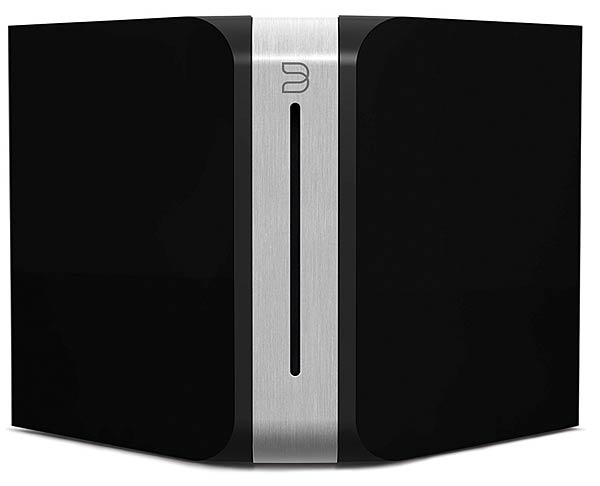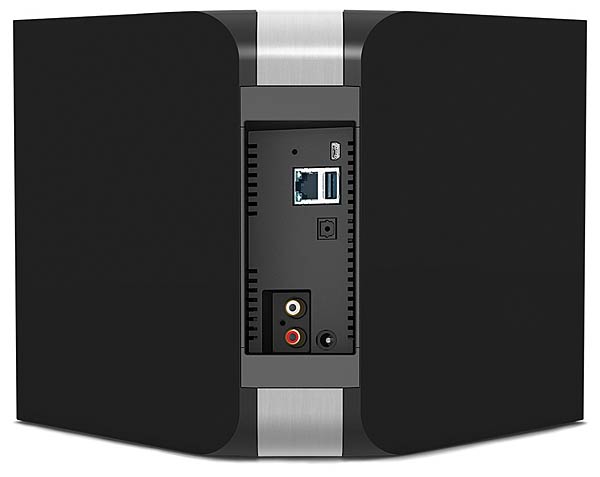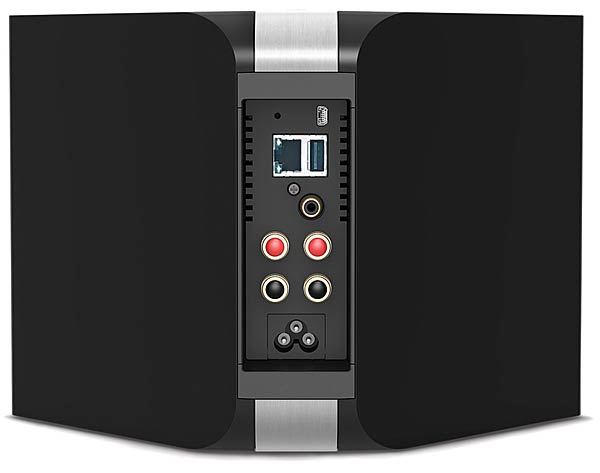Great article. Many of us sort-of-audiophiles use a Mac Mini/MacBook with a player (Audirvana Plus, Pure Music, Amarra) for digital audio sourced from a NAS or HDD. How would the sound quality compare? Can it replace the Mac Mini? Or how does it compare to other digital audio players? Thanks!
Bluesound Digital Multiroom Audio System

AT A GLANCE
Plus
Support for multiple high-rez codecs
No computer needed
Up to 32 players
$449 system entry price
Minus
No AirPlay support
Limited access to some popular streaming Internet services
THE VERDICT
Bluesound’s audio system takes the pain out of being an audiophile in a streaming digital music era.
Bluesound, as I found out, has nothing to do with the mythical brown note. (Go Google it.) Instead, this is how John Banks, Bluesound’s chief brand officer, described to me the who, what, and why of the new company—a splinter of the Lenbrook family responsible for the NAD and PSB brands—and its high-resolution, 24-bit native, pure-digital streaming music system: “Bluesound is an exciting alliance of audiophiles. We are designers, engineers, and passionate music lovers who have spent our lives in the audio industry. NAD and PSB, who you know well, pioneered hi-fi in the ’70s; clearly, innovation and the pursuit of perfection in audio runs deep in our collective DNA.”
So what do you do if you’re an old fogey who’s tired of digging through his vintage vinyl collection and painstakingly cleaning each record before playing it? You decide, in the words of Banks, “to create innovative wireless digital audio products and technologies that allow for the most lifelike music reproduction possible, utilizing the most advanced, stateof-the-art digital technology.” In other words, Bluesound wanted to make a kick-ass, high-performance (but still affordable) digital streaming music system that they wouldn’t have to make excuses about when their audiophile buddies parked their walkers by the front door and eased themselves into the lift recliners sitting in front of a pair of speakers.
A Cornucopia of Codecs
What the wise elders at Bluesound came up with is an ecosystem consisting of four component players—the Vault, the Node, the PowerNode, and the Pulse—plus a 2.1 speaker system called the Duo (despite the fact that it has three pieces). Although the Vault is Ethernet only (100 megabits per second), the other three players also include built-in 802.11n Wi-Fi connectivity. Whether wired or wireless, each player connects to your home network in order to communicate with the other players, access Internet streaming audio providers, and discover digital audio files stored on a NAS drive or other network shares. Each player’s USB port can be used with an optional Bluetooth dongle (aptX isn’t supported) or to connect a flash drive or external hard drive.
The number and types of supported audio codecs is impressive (MP3, AAC, WMA, WMA-L, OGG, FLAC, ALAC, WAV, and AIFF), with native sampling rates ranging from 32 to 192 kilohertz along with bit depths of 16 and 24. All of the Bluesound players are compatible with Mac (OSX, but not AirPlay) and Windows (XP, 2000, Vista, 7, 8) operating systems for music sharing and are, according to Bluesound, “purpose-built to stream full-rez 192-kHz/24-bit studio master recordings.” They all use super-fast ARM Cortex A8 processors and are controlled via Bluesound’s iOS and Android apps, but there are no dedicated Bluesound remote controls or keypads. A Bluesound system can start with any individual player on its own and can be expanded to include as many as 32 players—with a max limit of six players connected via Wi-Fi.
Players are available in either a high-gloss black or white finish. With the exception of the all-in-one Pulse, the players feature an unconventional industrial design overseen by David Farrage of DF-ID, who has also done work for Bluesound’s sister companies, NAD and PSB, as well as designs for the likes of Movado and Lamborghini. The Vault, the Node, and the PowerNode each resemble a glossy black (or white) cube-like box with two opposing corners rounded off and highlighted by a brushed aluminum strip running from the front corner to the back. Yes, I said, front corner, because the three aforementioned players are designed to sit with two sides of the player at 45degree angles to the front. It’s a cool look—although not very desktop or shelf-space efficient—and I’ve found that people either love it or, uh, don’t love it. The same goes for the high-gloss white finish. I happen to really like the design in black. Others have raved about the white. You’ll have to make your own decision.
How to Be a Player
While the players share the majority of features, there are some key differences. The Ethernet-only Vault ($999), for example, includes a built-in 1-terabyte hard drive along with a vertically oriented, slot-loading CD ripper. The Vault uses a proprietary BluOS file-management system and rips CDs in FLAC, MP3, or both simultaneously and stores the files on the hard drive. This capability means you can put together a multiroom Bluesound streaming music system without a computer or a separate NAS drive, simply by ripping your existing CD collection to the Vault.

All the players directly support multiple Internet streaming music services, including Tunein Radio, Rdio, Slacker Radio, WiMP, Qobuz, Deezer, and Juke (although the last four don’t offer U.S. access yet). But thanks to its built-in hard drive, the Vault can also download and store music files purchased from HighResAudio, which claims to be “the first commercial music download service for audiophiles worldwide offering only high-resolution 24-bit albums and songs at sampling rates from 88.2 kHz up to 384 kHz.” (Because HighResAudio is operated in Germany, not all of the titles in the service’s catalog are available for purchase in the U.S.) The Vault has optical digital and stereo analog audio outputs but doesn’t include a built-in amplifier. The sole control located on the Vault is a round mute button on the top near the front that glows blue when on and red when off.

The slightly smaller PowerNode ($699) lacks the CD ripper and the internal hard drive found in the Vault, but it includes a built-in 50 watts x 2 switching amp designed by NAD along with the attendant hefty binding posts and a single subwoofer pre-out. In addition to the mute button, the PowerNode has buttons for volume up and down. In contrast, the smallest of the three “cubist” Bluesound players, the Node ($449), doesn’t have an internal amp. Nor does it possess volume control buttons or a subwoofer output. Like the Vault, though, the Node includes a digital audio output and a set of RCA stereo analog outputs with the option of fixed or variable level, with the understanding that it will feed an existing audio system or conventional powered speaker set. It represents the lowest cost of entry for the system; one Node and the Bluesound control app are all you need to get going.

The Pulse ($699) is a self-contained player/speaker with the wide look of a traditional all-in-one powered speaker system. In addition to a scooped-out carrying handhold, the 13.5-pound Pulse has a backlit capacitance touchpanel on the top with controls for mute, volume up/down, and track forward/back. Inside is a total of 80 watts of switching amplification (again, courtesy of NAD) with a single 5.25-inch woofer flanked by a pair of 2.75-inch tweeters plus two forward-firing ports behind the full-front metal grille. The Pulse doesn’t have audio outputs.
In case you’re wondering, none of the Bluesound players features an analog audio input. This is a digital audio system from the beginning until almost the end of the chain, where you might find the Duo ($999) 2.1 speaker system. Designed by the eminent Paul Barton and his team at PSB, the Duo includes two modestsize monitor speakers with 1-inch aluminum-dome tweeters and 4-inch woofers in sealed cabinets. The Duo’s weighty subwoofer (almost 25 pounds) uses an 8-inch front-firing woofer with a 2.5-inch down-firing port plus a 110-watt internal amp. Aside from the nicely matching aesthetics, there’s nothing proprietarily Bluesound-ish about the Duo that would prevent you from using the speakers with a non-Bluesound amplifier—or, for that matter, using the Power Node with speakers other than the Duo.
App, App, and Away
It can’t be easy to design the hardware for a streaming digital music system. But from my experience with other examples on the market, it must be sheer hell to develop an intuitive, easy-to-use method of getting the system to play—whether by app or Web interface—what you want, where you want, and at the correct volume. (If you’d like to see the current state of the art, take a look at the apps and interfaces from Sonos and Kaleidescape.) Since Bluesound doesn’t offer a dedicated remote control, keypad, or touchscreen, the way the iOS and Android apps look and operate is extremely important. By the way, although you can access each player’s configuration screen via your computer (if you know the player’s IP address on your network), Bluesound doesn’t offer a way to control music playback from your computer. Depending upon how and where you intend to use a player, this lack of desktop control may be disappointing. The apps, on the other hand, don’t seem to be missing anything. It’s obvious that Bluesound spent a lot of effort designing the layout and the functionality of the iOS (with individual iPhone and iPad versions) and Android apps.
- Log in or register to post comments


My understanding is the Vault is around $1,000 and has suspect native tagging ability. A PC laptop would be cheaper and seems to do all of the necessary actions a user would need. I like the idea, but I'm not sure the price point is right with the limitations on tagging - important feature for an auto-ripper.





































































